
The Untamed Beauty of Sheyenne National Grassland
Discover the serene landscapes and diverse wildlife of Sheyenne National Grassland, North Dakota's hidden gem for nature lovers and outdoor enthusiasts.
Sheyenne National Grassland, located in the eastern part of North Dakota, offers a unique and serene escape for nature lovers. Spanning over 70,000 acres, this expansive grassland features a diverse ecosystem of rolling prairies, lush woodlands, and vibrant wildflowers, creating a picturesque landscape that changes with the seasons. Here, you can experience the true essence of the Great Plains, with an abundance of wildlife and a tranquil environment that invites exploration and relaxation. Visitors to Sheyenne National Grassland can enjoy a variety of outdoor activities. Hiking trails wind through the grasslands, offering opportunities to spot native species such as white-tailed deer, prairie chickens, and a multitude of songbirds. For those who prefer horseback riding, designated equestrian trails provide a unique way to traverse the expansive terrain. Additionally, the grassland is a haven for birdwatchers and photographers, who will find ample opportunities to capture the beauty of this unspoiled natural habitat. Camping is another popular activity in Sheyenne National Grassland, with several designated campsites available for tents and RVs. These sites provide a perfect base for stargazing, as the remote location ensures minimal light pollution, offering a clear view of the night sky. Whether you're seeking a peaceful retreat or an adventurous outing, Sheyenne National Grassland promises an unforgettable experience in the heart of North Dakota's natural beauty.
Local tips in Sheyenne National Grassland
- Bring plenty of water and snacks, as amenities are limited within the grassland.
- Wear sturdy hiking boots to navigate the varied terrain comfortably.
- Check the weather forecast before your visit, as conditions can change rapidly.
- Pack bug spray, especially during the summer months, to protect against mosquitoes and ticks.
- Carry a map or download offline maps, as cell service can be spotty in the area.
The Untamed Beauty of Sheyenne National Grassland
Sheyenne National Grassland, located in the eastern part of North Dakota, offers a unique and serene escape for nature lovers. Spanning over 70,000 acres, this expansive grassland features a diverse ecosystem of rolling prairies, lush woodlands, and vibrant wildflowers, creating a picturesque landscape that changes with the seasons. Here, you can experience the true essence of the Great Plains, with an abundance of wildlife and a tranquil environment that invites exploration and relaxation. Visitors to Sheyenne National Grassland can enjoy a variety of outdoor activities. Hiking trails wind through the grasslands, offering opportunities to spot native species such as white-tailed deer, prairie chickens, and a multitude of songbirds. For those who prefer horseback riding, designated equestrian trails provide a unique way to traverse the expansive terrain. Additionally, the grassland is a haven for birdwatchers and photographers, who will find ample opportunities to capture the beauty of this unspoiled natural habitat. Camping is another popular activity in Sheyenne National Grassland, with several designated campsites available for tents and RVs. These sites provide a perfect base for stargazing, as the remote location ensures minimal light pollution, offering a clear view of the night sky. Whether you're seeking a peaceful retreat or an adventurous outing, Sheyenne National Grassland promises an unforgettable experience in the heart of North Dakota's natural beauty.
When is the best time to go to Sheyenne National Grassland?
Unmissable attractions to see
Red River Zoo
Discover the beauty of wildlife at Red River Zoo in Fargo, ND, offering a unique family experience with diverse exhibits and educational programs.

Bonanzaville USA
Explore Bonanzaville USA, a living history museum in West Fargo, showcasing over 40 historic buildings and engaging exhibits of local heritage.
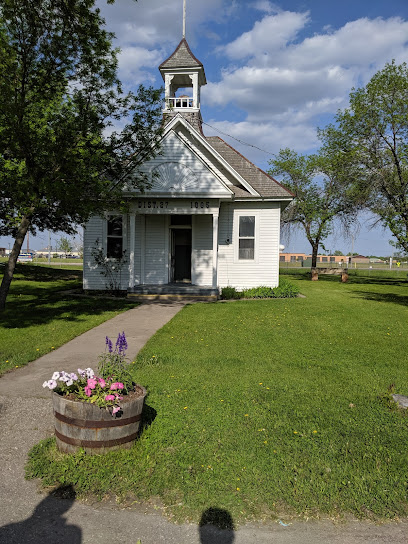
Fort Ransom State Park
Explore the breathtaking landscapes and outdoor adventures at Fort Ransom State Park, a true gem in North Dakota's natural beauty.

Chautauqua Park
Unwind and explore the natural beauty and rich history of Chautauqua Park in Valley City, North Dakota, a perfect retreat for nature lovers.

Medicine Wheel Park
Explore Medicine Wheel Park in Valley City, ND, where nature meets culture amidst stunning landscapes and a historic medicine wheel.

World's Largest Catfish
Discover the charm of North Dakota at the World's Largest Catfish, a quirky roadside attraction that promises fun and unforgettable photo opportunities.

Sheyenne River Valley National Scenic Byway
Explore the stunning landscapes and charming towns of the Sheyenne River Valley National Scenic Byway, a true North Dakota treasure for nature lovers and adventurers.

Tewaukon National Wildlife Rfg
Explore the untouched beauty of Tewaukon National Wildlife Refuge, a serene wildlife haven for outdoor enthusiasts and nature lovers in North Dakota.

Sheyenne River State Forest
Explore the serene Sheyenne River State Forest: a hiking paradise filled with picturesque landscapes, diverse wildlife, and unforgettable outdoor experiences.

Sheyenne National Grassland - East Trailhead- North Country Trail Access
Explore the breathtaking trails of Sheyenne National Grassland, a serene hiking destination in North Dakota's stunning outdoors.
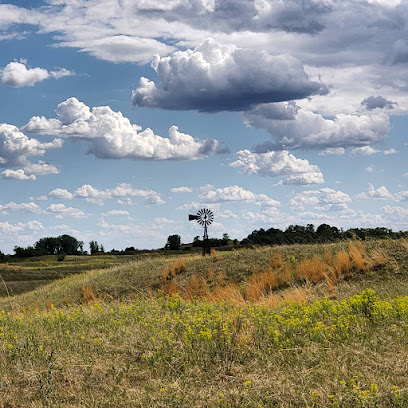
Fort Ransom State Historic Site
Explore the historical significance of Fort Ransom State Historic Site, a captivating glimpse into North Dakota's frontier history.

Standing Rock State Historic Site
Discover the rich heritage of the Standing Rock Sioux at this historic site in North Dakota, where history and nature beautifully intertwine.

Sargent County Museum
Explore the Sargent County Museum for a captivating journey through North Dakota's rich history and cultural heritage.

Mineral Springs Waterfall Trailhead.
Explore the breathtaking beauty of Mineral Springs Waterfall Trailhead, a serene hiking destination in Lisbon, North Dakota, surrounded by nature's tranquility.

Celebrity Walk Of Fame
Discover the Celebrity Walk Of Fame in Fargo, ND, where entertainment history meets local charm through handprints of iconic stars.

Essential places to dine
Kroll's Diner
Experience the heartwarming flavors of American and German breakfasts at Kroll's Diner in Fargo – where every meal feels like home.
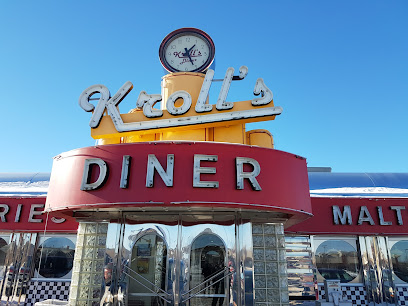
Spitfire Bar & Grill
Experience delicious barbecue at Spitfire Bar & Grill in West Fargo—where great food meets a vibrant atmosphere.

Würst Bier Hall
Discover Würst Bier Hall: A vibrant fusion of authentic German cuisine and local brews in Fargo's bustling Cityscapes Plaza.

The Shack on Broadway
Experience hearty American breakfasts at The Shack on Broadway in Fargo - where delicious meets affordable!

Porter Creek Hardwood Grill
Experience the finest American cuisine at Porter Creek Hardwood Grill in Fargo, ND - where every meal is grilled to perfection.

Randy's University Diner
Discover Randy's University Diner in Fargo: where hearty breakfasts meet friendly service in a cozy atmosphere.
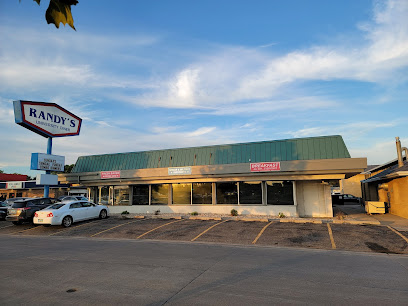
The Boiler Room
Experience flavorful American cuisine at The Boiler Room in Fargo - where great food meets vibrant nightlife.

Deaner's Diner
Experience hearty breakfasts at Deaner's Diner in West Fargo – where every bite brings comfort and satisfaction.

Beer & Fish Company
Savor fresh seafood and craft beers at Beer & Fish Company - where every bite is a delight in Fargo's vibrant downtown.

Passage To India Restaurant
Savor authentic Indian cuisine at Passage To India Restaurant in Fargo—where every dish is a celebration of flavor.

NoBull Smokehouse
Experience the best barbecue in Fargo at NoBull Smokehouse, where every dish is crafted with passion and served with warmth.
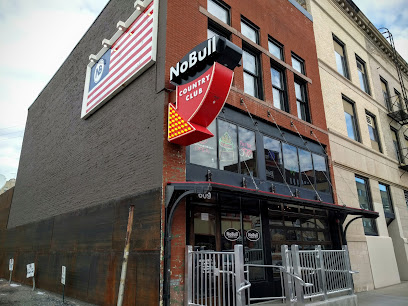
The Piggy BBQ
Experience authentic North Dakota barbecue at The Piggy BBQ in West Fargo – where every bite is a flavorful adventure.

Pizza Corner Restaurant
Discover authentic Italian flavors at Pizza Corner Restaurant in Valley City—where every slice tells a story.

Himalayan Yak
Discover authentic Himalayan flavors at Himalayan Yak in Fargo - where every dish tells a story.
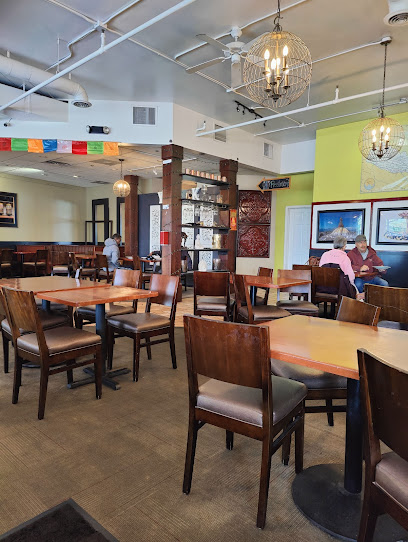
Herd and Horns
Discover Herd and Horns: Fargo's premier destination for grilled delights, sports viewing, and vibrant local culture.

Markets, malls and hidden boutiques
Sheyenne National Grassland
Discover the natural beauty and tranquility of Sheyenne National Grassland, a premier camping and outdoor adventure destination in North Dakota.

Teal's Market
Experience the charm of Teal's Market in Lisbon, ND - your go-to grocery store for fresh produce and local flavors.
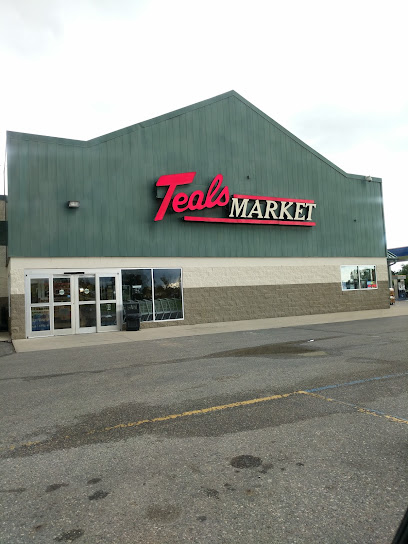
Dollar General
Explore the best of budget-friendly shopping at Dollar General in Lisbon, where variety meets value for every traveler.

Little Green Apple
Discover Fargo's Little Green Apple, a delightful gift shop offering unique presents, festive decorations, and quality greeting cards for any occasion.

Unglued
Explore Unglued, Fargo's vibrant gift shop for unique artistic handicrafts, children's party services, and creative workshops all under one roof.

Bison C-Store & Motel
Discover comfort and convenience at Bison C-Store & Motel in Milnor, ND, your ideal stop for rest and essentials on the road.

Vintage Point LLP
Explore the charm of Fargo at Vintage Point LLP, where unique gifts and local treasures await to be discovered.

O'Day Cache
Explore O'Day Cache in Fargo, ND: a charming gift shop and antique store brimming with unique treasures and local culture.

Hawk's Market & Bodega
Explore local flavors and warm hospitality at Hawk's Market & Bodega, a charming grocery store in Kindred, North Dakota.
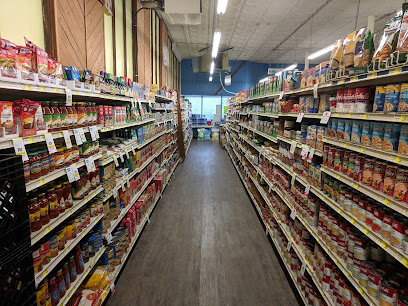
Central Grocery
Explore the heart of Forman at Central Grocery, where local flavors and friendly service come together in a charming shopping experience.

Kindred People
Discover unique gifts and stylish clothing at Kindred People, Fargo's premier boutique for fashion and home goods.

Fantasy Furniture
Discover the perfect blend of style and comfort at Fantasy Furniture in Lisbon, ND, where unique designs meet quality craftsmanship.

francesca's
Explore Francesca's in Fargo for stylish women's clothing, unique gifts, and a delightful shopping experience in a boutique setting.

Dry Goods
Explore Dry Goods in Fargo, ND for trendy women's fashion and accessories that blend style with affordability.
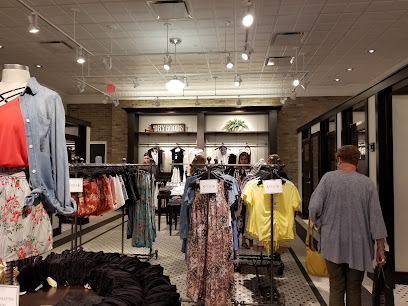
Airport Gift Shop
Discover unique souvenirs and local delights at the Fargo Airport Gift Shop, your gateway to North Dakota's culture and charm.

Essential bars & hidden hideouts
Blarney Stone Pub - West Fargo
Experience the authentic Irish pub atmosphere at Blarney Stone Pub in West Fargo with hearty food, a vast drink selection, and live entertainment.

Würst Bier Hall
Experience authentic German cuisine and craft beer at Würst Bier Hall, Fargo's lively destination for food lovers.

Lucky's 13 Pub
Experience the vibrant atmosphere at Lucky's 13 Pub in Fargo, where delicious food, craft drinks, and live music create unforgettable moments.

Dempsey's Public House
Discover the lively Irish pub experience at Dempsey's Public House, where great food, live music, and a welcoming atmosphere unite in Fargo.

Sidestreet Grille & Pub
Enjoy delicious grilled dishes, live music, and a vibrant atmosphere at Sidestreet Grille & Pub in Downtown Fargo.

Big Erv's Bar & Grill
Experience the vibrant flavors and welcoming atmosphere at Big Erv's Bar & Grill in Horace, North Dakota, a must-visit for food lovers.

The Windbreak
Discover the lively nightlife at The Windbreak, Fargo's premier bar and live music venue, offering great drinks and unforgettable entertainment.

Rick's Bar
Experience the vibrant nightlife of Fargo at Rick's Bar, where great drinks and a lively atmosphere await you.

Bordertown Bar & Grill
Discover the flavors of the Midwest at Bordertown Bar & Grill, where great food and a lively atmosphere meet in West Fargo, ND.

Herd and Horns
Discover the lively Herd and Horns in Fargo, where delicious grilled cuisine and a spirited sports bar atmosphere come together for an unforgettable dining experience.

Pub West
Experience great food and thrilling gaming at Pub West, the go-to grill and casino in West Fargo, North Dakota.

Wild Bill's Sports Saloon - Fargo
Discover Wild Bill's Sports Saloon in Fargo, where delicious food meets a lively sports atmosphere for the whole family.

The Black Pelican Bar & Grille - Katering & Kegs
Discover the vibrant atmosphere and delicious grill fare at The Black Pelican Bar & Grille in Wyndmere, ND - a culinary gem for every visitor.

Bar Down
Experience the thrill of sports and delicious dining at Bar Down, the go-to sports bar in West Fargo, ND.

Round Up Saloon
Experience the vibrant nightlife at Round Up Saloon in Fargo, ND, offering delicious drinks, lively entertainment, and a welcoming atmosphere.

Local Phrases about Sheyenne National Grassland
-
- HelloHowdy
[haw-dee] - GoodbyeSee ya
[see yah] - YesYah
[yah] - NoNah
[nah] - Please/You're welcomePlease/You're welcome
[please/yer welcome] - Thank youThanks
[thanks] - Excuse me/SorryPardon me
[par-dun me] - How are you?How ya doin'?
[how ya doin'] - Fine. And you?Fine. And you?
[fine. and you?] - Do you speak English?Ya speak English?
[yah speak ing-glish?] - I don't understandI don't get it
[I don't get it]
- HelloHowdy
-
- I'd like to see the menu, pleaseI'd like to see the menu, please
[I'd like to see the menu, please] - I don't eat meatI don't eat meat
[I don't eat meat] - Cheers!Cheers!
[Cheers!] - I would like to pay, pleaseI would like to pay, please
[I would like to pay, please]
- I'd like to see the menu, pleaseI'd like to see the menu, please
-
- Help!Help!
[Help!] - Go away!Git!
[Git!] - Call the Police!Call the Sheriff!
[Call the Sheriff!] - Call a doctor!Call a doc!
[Call a doc!] - I'm lostI'm lost
[I'm lost] - I'm illI'm sick
[I'm sick]
- Help!Help!
-
- I'd like to buy...I'd like to buy...
[I'd like to buy...] - I'm just lookingI'm just lookin'
[I'm just lookin'] - How much is it?How much is it?
[How much is it?] - That's too expensiveThat's too pricey
[That's too pricey] - Can you lower the price?Can ya lower the price?
[Can ya lower the price?]
- I'd like to buy...I'd like to buy...
-
- What time is it?What time is it?
[What time is it?] - It's one o'clockIt's one o'clock
[It's one o'clock] - Half past (10)Half past ten
[Half past ten] - MorningMornin'
[Mornin'] - AfternoonAfternoon
[Afternoon] - EveningEvenin'
[Evenin'] - YesterdayYesterday
[Yesterday] - TodayToday
[Today] - TomorrowTomorrow
[Tomorrow] - 1One
[One] - 2Two
[Two] - 3Three
[Three] - 4Four
[Four] - 5Five
[Five] - 6Six
[Six] - 7Seven
[Seven] - 8Eight
[Eight] - 9Nine
[Nine] - 10Ten
[Ten]
- What time is it?What time is it?
-
- Where's a/the...?Where's the...?
[Where's the...?] - What's the address?What's the address?
[What's the address?] - Can you show me (on the map)?Can ya show me (on the map)?
[Can ya show me (on the map)?] - When's the next (bus)?When's the next bus?
[When's the next bus?] - A ticket (to ....)A ticket to ...
[A ticket to ...]
- Where's a/the...?Where's the...?
History of Sheyenne National Grassland
-
Before European settlers arrived, the Sheyenne National Grassland was home to various Indigenous tribes, including the Dakota Sioux, who thrived in the region's diverse ecosystems. They utilized the land for hunting, fishing, and gathering, maintaining a harmonious relationship with the natural environment. Artifacts such as arrowheads and pottery shards discovered in the area provide a glimpse into their rich cultural history.
-
In the early 19th century, European explorers and fur traders began traversing the Northern Plains, including the Sheyenne National Grassland. This era was marked by the establishment of trading posts and increased interactions between Indigenous tribes and European settlers. The fur trade played a significant role in the early economic development of the region, with the Sheyenne River serving as a vital route for transport and trade.
-
The passage of the Homestead Act in 1862 spurred a wave of settlers to the Sheyenne National Grassland area. This legislation offered 160 acres of public land to any adult citizen who could improve the plot by building a dwelling and cultivating the land. The rich soil and ample water supply made the grassland an attractive destination for homesteaders, leading to the establishment of small farming communities and towns.
-
The 1930s Dust Bowl had a devastating impact on the Sheyenne National Grassland. Severe droughts and poor agricultural practices led to soil erosion and massive dust storms. In response, the federal government initiated land rehabilitation projects under the New Deal programs. The grassland was designated as a National Grassland in 1960, with efforts to restore native vegetation and promote sustainable land use practices.
-
The Sheyenne National Grassland is renowned for its diverse flora and fauna, including native grasses, wildflowers, and wildlife such as prairie chickens, white-tailed deer, and various bird species. Conservation efforts have focused on preserving these natural habitats, promoting biodiversity, and supporting research on the grassland's unique ecosystems. The area is also a critical habitat for the endangered Dakota skipper butterfly.
-
Today, Sheyenne National Grassland is a popular destination for outdoor enthusiasts, offering activities such as hiking, bird watching, horseback riding, and camping. The grassland's scenic trails and diverse landscapes attract visitors seeking to experience the natural beauty and tranquility of the region. Additionally, cultural events and heritage tours provide insights into the area's rich history and Indigenous heritage.
Sheyenne National Grassland Essentials
-
Sheyenne National Grassland is located in southeastern North Dakota. The nearest major airport is Hector International Airport in Fargo, approximately 70 miles away. From Fargo, you can rent a car or take a taxi to reach the grassland. The drive typically takes around 1.5 hours via I-29 S and ND-46 W. Public transportation options are limited, so renting a car is the most convenient way to get there.
-
Once at Sheyenne National Grassland, the best way to explore is by car or on foot. There are several gravel and dirt roads that provide access to different parts of the grassland. Hiking and horseback riding are popular ways to experience the landscape. There are no public transportation options within the grassland, so planning your route and transportation in advance is essential.
-
The official currency in the United States is the US Dollar (USD). Most establishments in the nearby towns accept credit and debit cards, but it is advisable to carry some cash, especially if you plan to visit smaller shops or rural areas. ATMs can be found in nearby towns like Lisbon and Enderlin, so it is wise to withdraw sufficient cash before heading into the grassland.
-
Sheyenne National Grassland is generally a safe destination for tourists. However, always take standard precautions such as locking your car and not leaving valuables unattended. There are no specific high-crime areas targeting tourists, but be mindful of your surroundings. Wildlife encounters can occur, so keep a safe distance from animals and follow all safety guidelines provided by park rangers.
-
In case of emergency, dial 911 for immediate assistance. The nearest medical facilities are located in the towns of Lisbon or Enderlin, which are about 20-30 miles away from the grassland. It is recommended to have travel insurance that covers medical emergencies. For minor health issues, there are pharmacies in these nearby towns where you can purchase over-the-counter medications.
-
Fashion: Do wear comfortable and weather-appropriate clothing, including sturdy hiking boots. Layers are recommended due to variable weather conditions. Religion: There are no specific religious customs to observe, but always respect the natural environment. Public Transport: As there is no public transport within the grassland, plan your travel accordingly. Greetings: A simple 'Hello' or 'Hi' is sufficient when greeting others you meet on the trails. Eating & Drinking: Do carry plenty of water and snacks, as there are no facilities within the grassland to purchase food or drinks. Don't leave trash behind; always follow Leave No Trace principles.
-
To experience Sheyenne National Grassland like a local, consider visiting during the spring or fall when the weather is mild and the landscape is particularly beautiful. Participate in local events such as guided hikes or wildlife watching tours organized by local conservation groups. Engage with locals in nearby towns for recommendations on hidden gems and scenic spots within the grassland. Don't miss the opportunity to explore the North Country National Scenic Trail, which runs through the grassland and offers stunning views and diverse flora and fauna.
Nearby Cities to Sheyenne National Grassland
-
Things To Do in Wahpeton
-
Things To Do in Fargo
-
Things To Do in Jamestown
-
Things To Do in Grand Forks
-
Things To Do in Watertown
-
Things To Do in Devils Lake
-
Things To Do in Brookings
-
Things To Do in Bismarck
-
Things To Do in Cavalier
-
Things To Do in Mandan
-
Things To Do in Saint Cloud
-
Things To Do in Mitchell
-
Things To Do in Pierre
-
Things To Do in Sioux Falls
-
Things To Do in Minot






